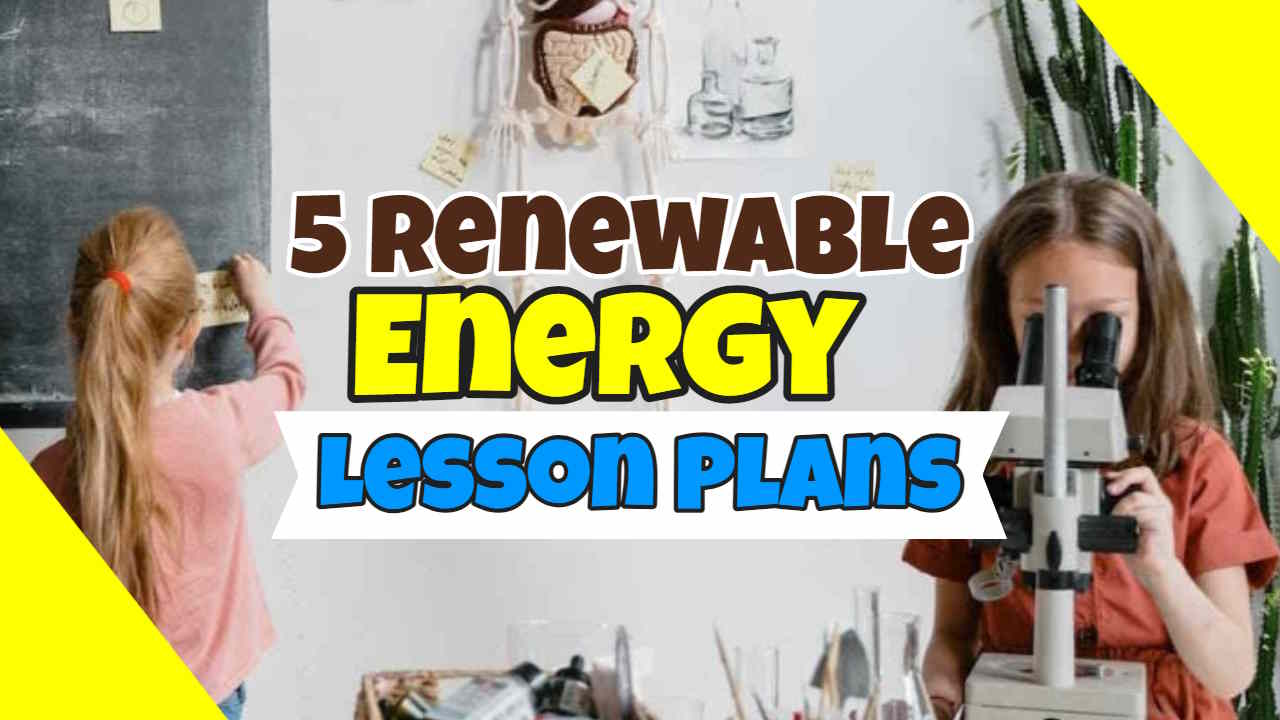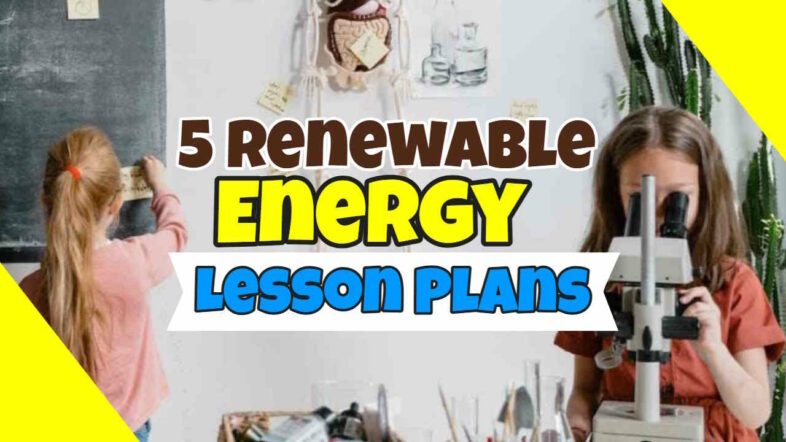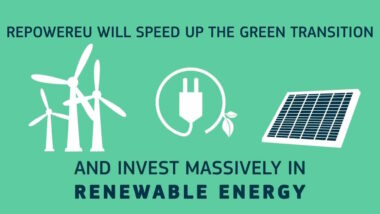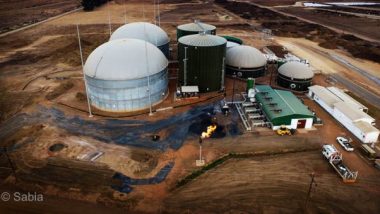In a diversion from our usual articles, this article is about helping teachers to educate schoolchildren up to Grade 7 with four Renewable Energy Lesson Plans. These plans are each included below in the sections which follow, but first please read our introduction to understand our motivation and our intended outcome:
Introduction to Renewable Energy Lesson Plans
In an age when our planet faces significant environmental challenges, understanding and promoting renewable energy sources is more critical than ever. The overuse of fossil fuels and its resulting impact on our climate make it clear that we need cleaner, more sustainable solutions.
This is where renewable energy comes into play. With the capacity to power our world while reducing our carbon footprint, it offers a promising path towards a sustainable future.
These renewable energy lesson plans are designed to introduce and explain various facets of renewable energy to students. They have been meticulously developed with the objective to foster an understanding of what renewable energy is, the various types and their benefits, as well as some practical applications of renewable energy, such as the process of anaerobic digestion and biogas production.
It's vital that the next generation grasps these concepts as they will be at the forefront of implementing and innovating renewable energy solutions in the future.
The plans are designed to be interactive, engaging, and comprehensive, offering teachers an effective approach to conveying complex concepts in a way that is easy for students to understand and appreciate. They combine theoretical knowledge with hands-on activities to ensure an immersive learning experience. The plans are flexible and can be easily adapted to suit different class dynamics, learning speeds, and curriculums.
Renewable energy is not just a subject; it's an initiative towards a healthier planet.
Our students will become future policymakers, scientists, and citizens. Equipping them with the knowledge and understanding of renewable energy can empower them to make more informed and responsible choices for our environment.
We encourage all educators to delve into these lesson plans, explore their potential, and consider using them in their classes. These lessons go beyond textbooks; they're about inciting curiosity, fostering awareness, and igniting a passion for sustainability in young minds. Let us commit to educating our students about renewable energy, for their future, and for the future of our planet.

Renewable Energy Lesson Plans 1 – Understanding Renewable Energy
Objective: At the end of this lesson, students should be able to understand the concept of renewable energy, identify different sources of renewable energy, and understand the importance and benefits of renewable energy to our environment and society.
Target Grade Level: 6th Grade
Materials:
- Computer with Internet Access
- Projector
- Handouts with key information
- Mini wind turbine kits for a class activity
- Renewable energy infographic poster
Lesson Duration: 60 minutes
Lesson Procedure:
- Introduction (10 minutes) Begin by asking students what they know about energy and energy sources. Discuss the difference between renewable and non-renewable energy. Highlight the key characteristics of renewable energy: it’s sustainable, does not deplete natural resources, and has a smaller environmental impact.
- Types of Renewable Energy (15 minutes) Using a presentation or infographic poster, introduce the different types of renewable energy: solar, wind, hydro, geothermal, and biomass. Provide key details about each source. Highlight how each form is used, where it's most effective, and how it’s captured or harnessed.
- Video Clip (10 minutes) Show students a short educational video about renewable energy. This could be a clip from a documentary, a YouTube educational video, or even a TED-Ed video. After watching, encourage a short discussion or ask questions to check students’ understanding.
- Class Activity: Wind Turbine Kits (20 minutes) Divide students into small groups and provide each group with a mini wind turbine kit. This activity will allow students to see how wind power can be harnessed. Monitor and assist the groups in their assembly of the wind turbines. After assembly, have a fan or hairdryer to demonstrate how wind can generate power. This hands-on activity will provide a tangible understanding of renewable energy.
- Discussion and Wrap-up (5 minutes) Recap the lesson and ask students about what they learned and what they found interesting. Ask them to share their thoughts on renewable energy and its importance. Reinforce the idea of renewable energy's role in combating climate change and conserving our planet.
Homework: Ask each student to write a one-page essay on how they can contribute to the promotion and usage of renewable energy in their homes, schools, or communities. This activity will help them connect what they have learned with their everyday lives.
Assessment: Assessment will be based on student's participation in class discussion, their performance in the group activity, and their homework essays.
Learning Outcomes:
- Students will be able to differentiate between renewable and non-renewable energy sources.
- Students will understand the benefits and challenges associated with each type of renewable energy.
- Students will gain an appreciation for the importance of renewable energy in our world today.
An Example of a Renewable Energy Training Video
The video below is an example of an educational video created by Steve Last, our author:
Renewable Energy Lesson Plans 2 – Renewable Energy and Its Impact
Objective: To deepen students' understanding of renewable energy, highlight its impact on the environment, economy, and society, and examine real-life examples of its use around the world.
Target Grade Level: 6th Grade
Materials:
- Computer with Internet Access
- Projector
- Case studies on different countries using renewable energy
- Paper and pen for group work
Lesson Duration: 60 minutes
Lesson Procedure:
- Review (10 minutes) Begin the lesson by reviewing the previous discussion about renewable energy. Ask students about the different types of renewable energy and how they work. This will reinforce what was learned in the previous session.
- Impact of Renewable Energy (15 minutes): Introduce students to the impact of renewable energy on different spheres, such as:
- Environment: Discuss how renewable energy helps in reducing greenhouse gas emissions, thereby combating climate change.
- Economy: Talk about how the renewable energy sector can create jobs and stimulate economic growth.
- Society: Explain how renewable energy can provide electricity in remote areas and improve living standards.
- Case Studies (20 minutes) Present several case studies of different countries that are successfully using renewable energy. For example, Germany's use of solar power, Denmark's use of Anaerobic Digestion to make biomethane from biogas and use that instead of imported (nonrenewable) natural gas, the United Kingdom's use of wind power, and Iceland's geothermal power. Discuss how these countries are benefiting from renewable energy and the challenges they have encountered.
- Group Work: Design a Renewable Energy System (10 minutes) Divide students into groups and ask them to design a simple renewable energy system for their school or community, using what they've learned about the different types of renewable energy. They should consider the local climate and available resources. This activity fosters creativity and allows students to apply their knowledge.
- Discussion and Wrap-up (5 minutes) Ask each group to share their designs and the rationale behind their choices. Summarize the key points of the lesson and encourage students to be proactive in promoting renewable energy.
Homework: Ask students to research one renewable energy project in their state or country and write a brief report about it, including its impact and effectiveness.
Assessment: Assessment will be based on student's participation in class discussions, their performance in the group activity, and their homework reports.
Learning Outcomes:
- Students will gain a deeper understanding of the impact of renewable energy on the environment, economy, and society.
- Students will appreciate real-world applications of renewable energy.
- Students will develop critical thinking skills by designing a renewable energy system.
Renewable Energy Lesson Plan 3 – Understanding Anaerobic Digestion and Biogas Production
Objective: At the end of this lesson, students should be able to explain the process of anaerobic digestion, understand how it produces biogas, and appreciate the value of this renewable energy source.
Target Grade Level: 5th Grade
Materials:
- Computer with Internet Access
- Projector
- Biogas production video
- Mini anaerobic digester model for a class demonstration
- Posters showing the process of anaerobic digestion
Lesson Duration: 60 minutes
Lesson Procedure:
- Introduction (10 minutes) Begin the lesson by discussing the concept of waste and its effects on our environment. Introduce the idea that waste can actually be used as a source of energy through a process called anaerobic digestion.
- Explaining Anaerobic Digestion (15 minutes) Explain the process of anaerobic digestion using simple terms. You could say, for example, “Anaerobic digestion is like a stomach breaking down food, but in this case, it breaks down waste materials like food scraps and animal waste. When this waste gets broken down, it releases a gas called biogas which we can use for energy.”
- Video Clip (10 minutes) Show a short educational video about anaerobic digestion and biogas production. This visual presentation will help students grasp the concept better. You may use a video that shows the anaerobic digestion process in a wastewater treatment plant or a farm.
- Class Demonstration: Mini Anaerobic Digester (15 minutes) Show students a mini anaerobic digester model, explaining each part of the model and how it corresponds to the process they've just learned. If possible, demonstrate the production of biogas (or a safe simulation of it), further solidifying the concept.
- Discussion and Wrap-up (10 minutes) Allow the students to ask questions about the process and discuss how this method of producing energy is beneficial because it helps reduce waste and produce renewable energy at the same time. Emphasize the importance of renewable energy and how it can help our environment.
Homework: Students should make a drawing or a collage of the anaerobic digestion process and label all the stages involved in the process.
Assessment: The assessment will be based on the student's participation in class discussions, their understanding of the process as demonstrated by questions they ask, and their homework assignment.
Learning Outcomes:
- Students will understand the process of anaerobic digestion and how it produces biogas.
- Students will recognize the importance of renewable energy sources in managing waste and protecting the environment.
- Students will be able to explain the concept of anaerobic digestion and biogas to others.
Renewable Energy Lesson Plans 4 – Anaerobic Digestion – A Natural Cycle for Sustainable Farming
Objective: At the end of this lesson, students should be able to explain the process of anaerobic digestion, understand how it treats organic waste in a sustainable way, and recognize its role in creating a natural cycle that benefits agriculture and the environment.
Target Grade Level: 6th Grade
Materials:
- Computer with Internet Access
- Projector
- Video on anaerobic digestion and its impact on farming
- Diagrams of the natural cycle involving anaerobic digestion
- Miniature model of a biogas plant
- Organic waste samples (like fruit peels, and vegetable scraps)
Lesson Duration: 60 minutes
Lesson Procedure:
- Introduction (10 minutes) Begin by discussing the problem of organic waste and how it is traditionally managed. Highlight the drawbacks of these traditional methods, including pollution of rivers and streams, algal blooms, and the killing of fish.
- Explaining Anaerobic Digestion (15 minutes) Introduce the process of anaerobic digestion, explaining how it naturally breaks down organic waste like food scraps. Use a miniature model of a biogas plant to illustrate this process.
- Anaerobic Digestion and the Natural Cycle (15 minutes) Using diagrams, explain how anaerobic digestion fits into the natural cycle. Discuss how it produces biogas that can be used for energy and a nutrient-rich residue that can serve as a natural fertilizer for farming. Discuss how this method, once a part of age-old farming practices, is being revived today.
- Video Presentation (10 minutes) Show a video that demonstrates anaerobic digestion in a farm setting, showcasing how it helps create a sustainable farming system. The video should also highlight the reduction in pollution as a result of using nutrient-rich residue as a natural fertilizer instead of synthetic fertilizers.
- Discussion and Wrap-up (10 minutes) Wrap up the lesson by discussing the benefits of anaerobic digestion, both for waste management and sustainable farming. Discuss how future farmers can incorporate this process into their farming practices to create a more sustainable and less polluting system.
Homework: Have students prepare a short presentation or poster on the process of anaerobic digestion and its role in creating a sustainable farming system. They should include the benefits of this process and how it reduces environmental pollution.
Assessment: The assessment will be based on the student's participation in class discussions and the thoroughness of their presentations or posters.
Learning Outcomes:
- Students will understand the process of anaerobic digestion and how it treats organic waste.
- Students will recognize the role of anaerobic digestion in the natural cycle and how it benefits farming and the environment.
- Students will appreciate the importance of sustainable farming practices in protecting our rivers and streams.
Renewable Energy Lesson Plans 5 – A Practical Biogas Plant Science Project
Objective: At the end of this lesson, students will be able to understand and demonstrate the process of biogas production using mini biogas digesters, and measure the efficiency of their digesters in producing biogas.
Target Grade Level: 7th Grade
Materials:
- Mini biogas digester kits for each group
- Organic waste (kitchen scraps, garden waste)
- Safety goggles and gloves
- Measurement tools for gas production
- Journals for each student to document their observations and results
Lesson Duration: 90 minutes (spread over several days)
Lesson Procedure:
- Introduction and Review (15 minutes) Begin by reviewing the process of anaerobic digestion and how it leads to biogas production. Make sure students understand the basics before they start the hands-on project.
- Project Overview (10 minutes) Explain the Biogas Plant Science Project to the students. Make sure they understand that they'll be working in groups to build and monitor their own mini biogas digesters.
- Safety Measures (5 minutes) Discuss the importance of safety measures while handling organic waste and the digester kits. Hand out safety goggles and gloves to each group.
- Group Work: Building the Digester (20 minutes) Divide the class into small groups and distribute the mini biogas digester kits. Each group will assemble their digester as per the kit instructions.
- Loading the Digester (10 minutes) Each group will load their digester with the provided organic waste. Discuss the importance of monitoring the amount and type of waste they add.
- Observation and Monitoring (30 minutes spread over several days) Over the following days, the students will monitor their digesters daily. They'll observe the amount of biogas produced, the temperature, and any changes in the waste. Encourage them to record their observations in their journals.
- Analysis and Discussion (Wrap-up session of 20 minutes after several days) After a predetermined period, have a wrap-up session where each group presents their observations and findings. Discuss the efficiency of their digesters in producing biogas and what factors may have affected this.
Homework: Have each student write a final report on their findings, including the setup process, their observations, and conclusions on what conditions helped to maximize biogas production.
Assessment: The assessment will be based on the student's participation in group activities, the thoroughness of their observations and journal records, and their final report.
Learning Outcomes:
- Students will understand the practical application of anaerobic digestion in producing biogas.
- Students will learn to work collaboratively in a group to conduct a science project.
- Students will develop observation and analytical skills through monitoring and recording the project's progress.
- Students will appreciate the importance of renewable energy sources and waste management in protecting the environment.
Conclusion Our 5 Renewable Energy Lesson Plans Article
Our journey through these educational resources on renewable energy concludes here. Yet, this is just the beginning of an exciting adventure for those who choose to employ these renewable energy lesson plans in their educational journey.
While these renewable energy lesson plans are not prepared by a trained teacher, they bear the hallmark of decades of hands-on experience and deep understanding. They are authored by Steve Last, a Chartered Waste Manager with over 30 years of experience in the field of renewable energy and waste management. His profound knowledge and dedication to the cause have shaped these plans, making them as detailed, engaging, and insightful as they are.
The primary purpose of these plans is to make the understanding of renewable energy not only accessible but also exciting for young learners. We navigated through understanding the basics of renewable energy, exploring various types like solar, wind, hydro, geothermal, and biomass. We delved into the intricacies of anaerobic digestion and biogas production, and we ended up with a hands-on science project involving the creation of mini biogas digesters.
By using these renewable energy lesson plans, educators can kindle in their students a deep appreciation for renewable energy and its significance in our world today. It's an opportunity to equip them with the knowledge that goes beyond the classroom – knowledge that empowers them to be mindful citizens and innovative thinkers in the future.
And yet, as we strive to improve and expand these resources, we recognize that your feedback is crucial. Your experiences, your successes, and even your challenges in implementing these renewable energy lesson plans can help us refine and enhance them. Therefore, we earnestly request all teachers, educators, or anyone who uses these resources to share their feedback. Whether it's a nugget of praise or a suggestion for improvement, every comment is invaluable.
Further Development of Classroom Materials
I would be interested in collaborating with any teacher or lecturer, using my specialist engineering and waste management knowledge, to further develop the resources/ renewable energy lesson plans on this page. I would especially like to know:
- How to refine these renewable energy lesson plans to make them more useful, such as more focused on school curriculums
- Would it also be useful to create and add additional multi-media such as videos, case studies, diagrams, etc?
- And, finally is there a market for these to charge for specific things, or alternatively a funding source or charity which would be interested in collaborating to produce additional materials?
Please, let us know your thoughts by using the comments section provided at the bottom of this page. Together, let's inspire a generation of learners who are not only knowledgeable about renewable energy but are also passionate about driving a sustainable future for all.
Thank you for joining us on this journey of learning and discovery. Now, it's your turn to carry the torch of knowledge forward.




